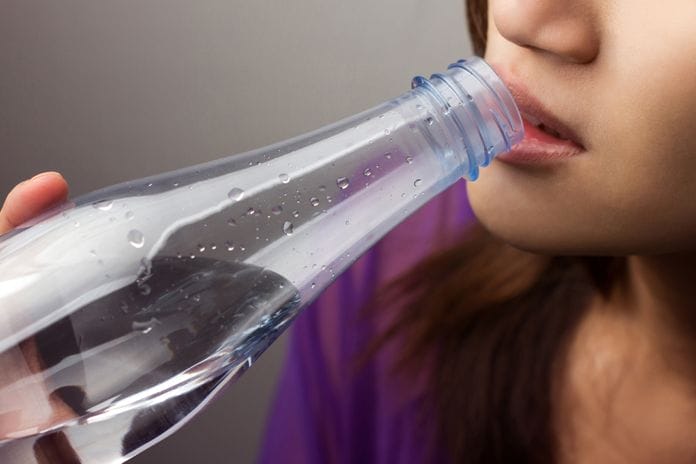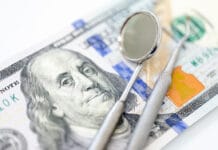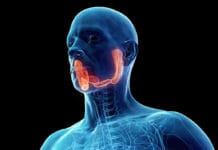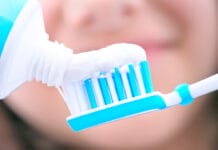Each time a patient sits down in my chair, I ask them a series of questions before I do anything else:
- Are there any changes in your health since we last saw you in the office?
- Are you currently taking any medications, either prescribed or over-the-counter?
- Is there anything giving you any trouble in your mouth? Any pain, sensitivity, etc.?
In my office, we make sure that each patient fills out a new health history at least every two years. As a result of this practice, Questions 1 and 2 are pretty straight-forward for most of our patients, even for those with systemic conditions. But all bets are off when a patient answers Question #3 with a Yes, actually there is.
There isn’t much I can’t handle. Sensitive teeth? Alright, let’s determine the cause. Trauma? We’ll fix you right up! Pain of some variety? Tell me all about it! Bleeding, sore gums? Well, I’m mighty glad you said something, that’s my department! Dry mouth? Oh boy, ok, here we go.
Dry mouth, or xerostomia, may be the most complex and baffling of the patient complaints we face as hygienists. Why? Because often there is not a direct cause, and there is not a direct response.
First things first, we must revisit Question 1. Did the patient indicate they have a systemic condition that might lead to dry mouth? There are many systemic conditions and diseases which can affect salivary gland production and cause xerostomia. The most notable of these is Sjögren’s syndrome, an autoimmune condition that affects the mucous membranes and is characterized by dry mouth. In fact, while many systemic conditions can cause xerostomia independently, some patients with these conditions report dry mouth as a result of a secondary Sjögren’s diagnosis. This is often the case with viral conditions such as HIV, Hepatitis C, and Epstein-Barr (infectious mononucleosis).
Autoimmune disorders, such as rheumatoid arthritis and scleroderma, can also cause salivary gland hypofunction. Special attention should be given to those who report dry mouth after having received chemotherapy or radiation treatment for cancer of the head or neck; depending on the dosage and delivery site, the major salivary glands may have been damaged. Additionally, patients with sleep apnea often experience xerostomia as a result of either their nightly CPAP machine usage or snoring due to the obstructed airway.
Now that we have comprehensively reviewed the patient’s medical history by studying the answers to Question 1, we have to consider the drugs that the patient is currently taking as a result of their various conditions. Many different drugs have xerogenic effects as a result of daily use. Several of these medications are prescribed to address a specific ailment; examples include beta blockers/antihypertensives, antidepressants, antipsychotics, inhaled corticosteroids, and anticonvulsants. Xerogenic drugs may also be found over-the-counter right in your friendly, neighborhood pharmacy; antihistamines, NSAIDS, and antacids are all less commonly known xerogenic drugs. Patients might not always consider their everyday antihistamine or antacid use might lead to dental complications, and it is our responsibility as educators and advocates, to ensure even the simplest of supplements is not overlooked.
Occasionally we make it through Questions 1 and 2 without notable concerns that may cause the reported xerostomia. Again, this is where we have to be more diligent with our patient questioning. Does the patient play a wind instrument professionally or recreationally? Perhaps the excessive air exposure is drying the tissues. Is the patient only experiencing dry mouth in the morning? Maybe they are snoring or suffer from sleep apnea. Some patients simply do not stay as hydrated as they should. For true, clinically notable xerostomia, you may have to ask the patient to consult their primary care physician; maybe there is an underlying systemic cause for the uncomfortable dry mouth they are experiencing. Until then, we can only offer a range of options to improve their comfort level and quality of life. So where do we start?
I wanted to know what a patient might do if he or she were experiencing dry mouth, so I Googled “best dry mouth products.” While many sources mentioned reasonable relief practices, one article listed some tips that made my jaw drop. Have a piece of candy? Chew some gum? Suck on a lemon?! ARE YOU KIDDING ME?! We can only hope that our patients have better sense than to try some of these horrible ideas that might lead to rampant caries; we need to have the answers, so they are not tempted to try anything rash.
Many of us are familiar with Bioténe® when considering a dry mouth product to our patients. Its enzymatic formula has been made into various rinses, gels, and sprays to help promote moisturization of the oral cavity and improve comfort. Bioténe® is a tried-and-true dry mouth brand, however, it is no longer the only product that may offer our patients relief. Another notable OTC product of repute is ACT®. Their dry mouth rinse is formulated to moisturize like Bioténe® but also offers the anti-cavity protection that we know is crucial for our dry mouth patients. ACT® also manufactures dry mouth lozenges that offer a convenient solution for those who need relief throughout the day.
Additional dry mouth sprays, rinses, and gels include:
- Allday™ Dry Mouth Spray
- Colgate® Hydris™ Oralrinse and Toothpaste
- GC America Dry Mouth Gel
- Mouth Kote® Dry Mouth Spray
- Oasis® by Sensodyne® Mouthwash and Spray
- Xlear Xylitol Moisturizing Mouth Spray
- OraCoat XyliGel®
Xylitol-containing lozenges, mints, and gum to help promote saliva production:
- 3M™ TheraMints™
- Ortek Therapeutics BasicBites®
- Epic Xylitol Mints and Gum
- Xlear Spry Xylitol Mints and Gum
- OraCoat XyliMelts®
- Ice Chips®
For those whom temporary relief just does not do the trick, we can recommend super-saturated calcium phosphate rinses throughout the day to replace saliva; brands like NeutraSal® and SalivaMax® are both available for patients via prescription. Super-saturated calcium phosphate helps balance pH levels in the oral environment and keep tissues hydrated. Another prescription that may help with extreme xerostomia is Salagen®. Salagen® is usually prescribed to Sjögren’s patients and increases saliva production. As Salagen® is a cholinergic agonist, it should be noted the mechanism of action is opposite to that of the anticholinergic drugs that usually cause dry mouth.
There are many reasons a patient could be suffering from xerostomia. The good news for them (and for bewildered hygienists such as myself) is there are numerous options available to a patient in search of relief, no matter how severe the symptoms. Let’s just keep them away from Google, shall we?
SEE ALSO: All About Xylitol, the New Sugar: Sweetness with Benefits
31 Cannabis Legalization Changes How Dental Practices Should Operate












